John Steinbeck
John Steinbeck was an American novelist who is known for works such as the Pulitzer Prize-winning novel, 'The Grapes of Wrath,' as well as 'Of Mice and Men' and 'East of Eden.'

(1902-1968)

Who Was John Steinbeck?
John Steinbeck was a Nobel and Pulitzer Prize-winning American novelist and the author of Of Mice and Men , The Grapes of Wrath and East of Eden. Steinbeck dropped out of college and worked as a manual laborer before achieving success as a writer. His works often dealt with social and economic issues. His 1939 novel, The Grapes of Wrath , about the migration of a family from the Oklahoma Dust Bowl to California, won a Pulitzer Prize and a National Book Award. Steinbeck served as a war correspondent during World War II, and he was awarded the Nobel Prize for Literature in 1962.
Early Life and Education
John Ernst Steinbeck Jr. was born on February 27, 1902, in Salinas, California. Steinbeck was raised with modest means. His father, John Ernst Steinbeck, tried his hand at several different jobs to keep his family fed: He owned a feed-and-grain store, managed a flour plant and served as treasurer of Monterey County. His mother, Olive Hamilton Steinbeck, was a former schoolteacher.
For the most part, Steinbeck — who grew up with three sisters — had a happy childhood. He was shy but smart. He formed an early appreciation for the land and in particular California's Salinas Valley, which would greatly inform his later writing. According to accounts, Steinbeck decided to become a writer at the age of 14, often locking himself in his bedroom to write poems and stories.
In 1919, Steinbeck enrolled at Stanford University — a decision that had more to do with pleasing his parents than anything else — but the budding writer would prove to have little use for college.
Over the next six years, Steinbeck drifted in and out of school, eventually dropping out for good in 1925, without a degree.
Following Stanford, Steinbeck tried to make a go of it as a freelance writer. He briefly moved to New York City, where he found work as a construction worker and a newspaper reporter, but then returned to California, where he took a job as a caretaker in Lake Tahoe and began his writing career.
John Steinbeck’s Books
Steinbeck wrote 31 books over the course of his career. His most well-known novels include Of Mice and Men (1937), Grapes of Wrath (1939) and East of Eden (1952).
'Of Mice and Men' (1937)
Two poor migrant workers, George and Lennie, are working for the American dream in California during the Great Depression. Lennie, who has a mild mental disability, is steadfastly faithful to his friend George, but he has a habit of getting into trouble. Their goal: to own an acre of land and a shack. After they both secure jobs working the fields of the Salinas Valley — Steinbeck’s own hometown — their dream seems more attainable than ever. However, Lennie’s inclinations eventually get him into trouble again, spiraling to a tragic conclusion for both men. The book was later transformed into a Broadway play and three movies.
'The Grapes of Wrath' (1939)
Widely considered Steinbeck's finest and most ambitious novel, this book tells the story of a dispossessed Oklahoma family and their struggle to carve out a new life in California at the height of the Great Depression, the book captured the mood and angst of the nation during this time period. At the height of its popularity, The Grapes of Wrath sold 10,000 copies per week.
'The Pearl' (1947)
This story, based on a Mexican folktale, explores human nature and the potential of love. Kino, a poor diver who gathers pearls from the ocean floor, lives with his wife Juana and their infant son Coyotito by the sea. On the same day Coyotito is stung by a scorpion and is turned away by the town doctor because they can’t afford care, Kino finds the largest pearl he’s ever seen on one of his dives. The pearl, which brings the potential of great fortune, ignites the neighbors’ jealousy, eventually becoming a dangerous agent of evil.
'East of Eden' (1952)
Once again set in Steinbeck’s hometown of Salinas, California, this story follows the intersecting stories of two farming families, the Trasks and the Hamiltons, from the Civil War to World War I, as their lives reenact the fall of Adam and Eve and the rivalry of Cain and Abel. The book was later adapted into a 1955 film directed by Elia Kazan and starring James Dean in his first major movie role. Dean was later nominated for an Academy Award for his performance, which he received posthumously.
Some of Steinbeck’s other works include Cup of Gold (1929), The Pastures of Heaven (1932) and To a God Unknown (1933), all of which received tepid reviews. It wasn't until Tortilla Flat (1935), a humorous novel about paisano life in the Monterey region was released, that the writer achieved real success.
Steinbeck struck a more serious tone with In Dubious Battle (1936) and The Long Valley (1938), a collection of short stories. He continued to write in his later years, with credits including Cannery Row (1945), Burning Bright (1950), The Winter of Our Discontent (1961) and Travels with Charley: In Search of America (1962).
In 1940, Steinbeck earned a Pulitzer Prize for The Grapes of Wrath . In 1962, the author received the Nobel Prize for Literature — "for his realistic and imaginative writings, combining as they do sympathetic humour and keen social perception." Upon receiving the award, Steinbeck said the writer’s duty was “dredging up to the light our dark and dangerous dreams for the purpose of improvement.”
During World War II, Steinbeck served as a war correspondent for the New York Herald Tribune .
Around this same time, he traveled to Mexico to collect marine life with friend Edward F. Ricketts, a marine biologist. Their collaboration resulted in the book Sea of Cortez (1941), which describes marine life in the Gulf of California.
Wives and Children
Steinbeck was married three times and had two sons. In 1930, Steinbeck met and married his first wife, Carol Henning. Over the following decade, he poured himself into his writing with Carol's support and paycheck, until the couple divorced in 1942.
Steinbeck was married to his second wife, Gwyndolyn Conger, from 1943 to 1948. The couple had two sons together, Thomas (born 1944) and John (born 1946). In 1950, Steinbeck wed his third wife, Elaine Anderson Scott. The couple remained together until his death in 1968.
Steinbeck died of heart disease on December 20, 1968, at his home in New York City.
QUICK FACTS
- Name: John Steinbeck
- Birth Year: 1902
- Birth date: February 27, 1902
- Birth State: California
- Birth City: Salinas
- Birth Country: United States
- Gender: Male
- Best Known For: John Steinbeck was an American novelist who is known for works such as the Pulitzer Prize-winning novel, 'The Grapes of Wrath,' as well as 'Of Mice and Men' and 'East of Eden.'
- Fiction and Poetry
- Astrological Sign: Pisces
- Stanford University
- Interesting Facts
- John Steinbeck enrolled at Stanford University but never finished his degree.
- During World War II, Steinbeck served as a war correspondent for the New York Herald Tribune.
- Steinbeck had married three times in his lifetime.
- Death Year: 1968
- Death date: December 20, 1968
- Death State: New York
- Death City: New York
- Death Country: United States
We strive for accuracy and fairness.If you see something that doesn't look right, contact us !
CITATION INFORMATION
- Article Title: John Steinbeck Biography
- Author: Biography.com Editors
- Website Name: The Biography.com website
- Url: https://www.biography.com/authors-writers/john-steinbeck
- Access Date:
- Publisher: A&E; Television Networks
- Last Updated: April 14, 2021
- Original Published Date: April 2, 2014
- A journey is a person in itself; no two are alike. And all plans, safeguards, policing, and coercion are fruitless. We find that after years of struggle that we do not take a trip; a trip takes us.
- In the souls of the people the grapes of wrath are filling and growing heavy, growing heavy for the vintage.
- Ideas are like rabbits. You get a couple and learn how to handle them, and pretty soon you have a dozen.
- We are lonesome animals. We spend all our life trying to be less lonesome.
- The discipline of the written word punishes both stupidity and dishonesty.
- A writer lives in awe of words, for they can be cruel or kind, and they can change their meanings right in front of you.
- To finish is sadness to a writer—a little death. He puts the last word down and it is done. But it isn't really done. The story goes on and leaves the writer behind, for no story is ever done.
- I know that no one really wants the benefit of anyone's experience, which is probably why it is so freely offered.
- I should think that a comfortable body would let the mind go freely to its gathering.
- I do a whole of a day's work and then the next day, flushed with triumph, I dawdle. That's today. The crazy thing is that I get about the same number of words down either way.
- I guess it is a good thing I became a writer. Perhaps I am too lazy for anything else.
- For poetry is the mathematics of writing and closely kin to music. And it is also the best therapy because sometimes the troubles come tumbling out.
- The craft or art of writing is the clumsy attempt to find symbols for the wordlessness.
- I learned long ago that you cannot tell how you will end by how you start.
- We work in our own darkness a great deal with little real knowledge of what we are doing. I think I know better what I am doing than most writers but it still isn't much.
- Give a critic an inch and he'll write a play.
The Biography.com staff is a team of people-obsessed and news-hungry editors with decades of collective experience. We have worked as daily newspaper reporters, major national magazine editors, and as editors-in-chief of regional media publications. Among our ranks are book authors and award-winning journalists. Our staff also works with freelance writers, researchers, and other contributors to produce the smart, compelling profiles and articles you see on our site. To meet the team, visit our About Us page: https://www.biography.com/about/a43602329/about-us


Famous Authors & Writers

The Truth Behind Edgar Allan Poe’s Terror Tales

How Did Shakespeare Die?

A Huge Shakespeare Mystery, Solved

Shakespeare Wrote 3 Tragedies in Turbulent Times
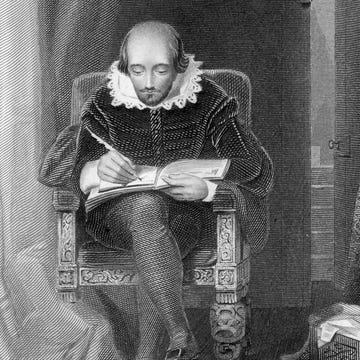
The Mystery of Shakespeare's Life and Death
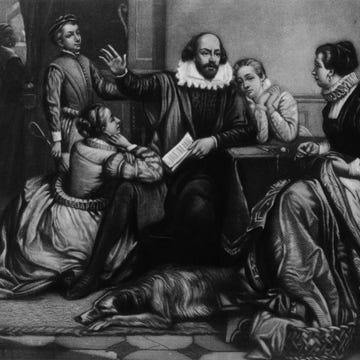
Was Shakespeare the Real Author of His Plays?
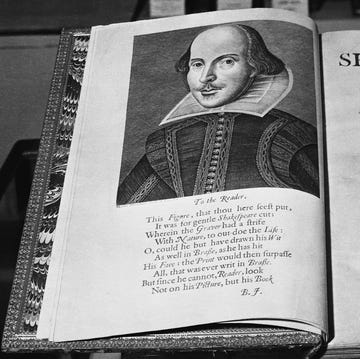
20 Shakespeare Quotes

William Shakespeare

The Ultimate William Shakespeare Study Guide

Suzanne Collins
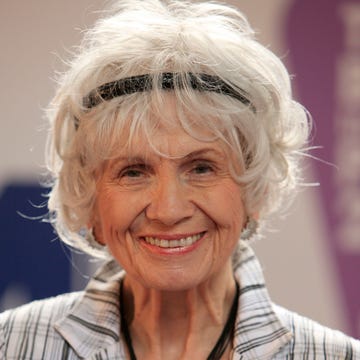
Alice Munro
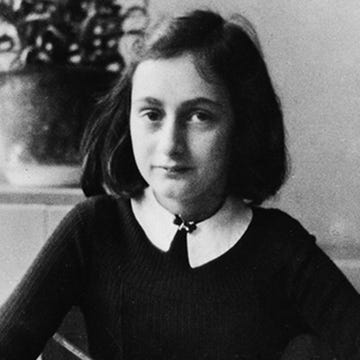
- World Biography
John Steinbeck Biography
Born: February 27, 1902 Salinas, California Died: December 20, 1968 New York, New York American writer
John Steinbeck, American author and winner of the Nobel Prize in 1962, was a leading writer of novels about the working class and was a major spokesman for the victims of the Great Depression (a downturn in the American system of producing, distributing, and using goods and services in the 1930s, and during which time millions of people lost their jobs).
John Ernst Steinbeck was born on February 27, 1902, in Salinas, California, the only son of John Ernst Steinbeck Sr. and Olive Hamilton. His father was a bookkeeper and accountant who served for many years as the treasurer of Monterey County, California. Steinbeck received his love of literature from his mother, who was interested in the arts. His favorite book, and a main influence on his writing, was Sir Thomas Malory's (c. 1408–1471) Le Morte d'Arthur, a collection of the legends of King Arthur. Steinbeck decided while in high school that he wanted to be a writer. He also enjoyed playing sports and worked during the summer on various ranches.
Steinbeck worked as a laboratory assistant and farm laborer to support himself through six years of study at Stanford University, where he took only those courses that interested him without seeking a degree. In 1925 he traveled to New York (by way of the Panama Canal) on a freighter (boat that carries inventory). After arriving in New York, he worked as a reporter and as part of a construction crew building Madison Square Garden. During this time he was also collecting impressions for his first novel. Cup of Gold (1929) was an unsuccessful attempt at romance involving the pirate Henry Morgan.
Begins writing seriously
Undiscouraged, Steinbeck returned to California to begin work as a writer of serious fiction. A collection of short stories, The Pastures of Heaven (1932), contained vivid descriptions of rural (farm) life among the "unfinished children of nature" in his native California valley. His second novel, To a God Unknown (1933), was his strongest statement about man's relationship to the land. With Tortilla Flat (1935) Steinbeck received critical and popular success; there are many critics who consider it his most artistically satisfying work.

Steinbeck next dealt with the problems of labor unions in In Dubious Battle (1936), an effective story of a strike (when workers all decide to stop working as a form of protest against unfair treatment) by local grape pickers. Of Mice and Men (1937), first conceived as a play, is a tightly constructed novella (short novel) about an unusual friendship between two migrant workers (laborers who travel to wherever there is available work, usually on farms). Although the book is powerfully written and often moving, some critics feel that it lacks a moral vision.
Steinbeck's series of articles for the San Francisco Chronicle on the problems of migrant farm laborers provided material for The Grapes of Wrath (1939), his major novel and the finest working-class novel of the 1930s. The Grapes of Wrath relates the struggle of a family of Oklahoma tenant farmers forced to turn over their land to the banks. The family then journeys across the vast plains to the promised land of California—only to be met with scorn when they arrive. It is a successful example of social protest in fiction, as well as a convincing tribute to man's will to survive. The Grapes of Wrath received the Pulitzer Prize in 1940.
Other subjects
During World War II (1939–45), which the United States entered to help other nations battle Germany, Italy, and Japan, Steinbeck served as a foreign correspondent. From this experience came such nonfiction as Bombs Away: The Story of a Bomber Team (1942); Once There Was a War (1958), a collection of Steinbeck's dispatches from 1943; and A Russian Journal (1948), with photographs by Robert Capa. More interesting nonfiction of this period is The Sea of Cortez, coauthored with scientist Edward F. Ricketts. This account of the two explorers' research into sea life provides an important key to many of the themes and attitudes featured in Steinbeck's novels.
Steinbeck's fiction during the 1940s includes The Moon Is Down (1942), a tale of the Norwegian resistance to occupation by the Nazis (German ruling party that scorned democracy and considered all non-German people, especially Jews, inferior); Cannery Row (1944), a return to the setting of Tortilla Flat; The Wayward Bus (1947); and The Pearl, a popular novella about a poor Mexican fisherman who discovers a valuable pearl that brings bad luck to his family.
Later decline
In the 1950s Steinbeck's artistic decline was evident with a series of novels that were overly sentimental, stuffy, and lacking in substance. The author received modest critical praise in 1961 for his more ambitious novel The Winter of Our Discontent, a study of the moral disintegration (falling apart) of a man of high ideals. In 1962 Travels with Charley, a pleasantly humorous account of his travels through America with his pet poodle, was well received. Following the popular success of the latter work, Steinbeck was awarded the Nobel Prize.
Steinbeck's work remains popular in both the United States and Europe, chiefly for its social consciousness and concern and for the narrative qualities displayed in the early novels. Although he refused to settle into political conservatism (preferring to maintain traditions and resist change) in his later years, his all-embracing support of American values and acceptance of all national policies, including the Vietnam War (1955–75; conflict in which the United States fought against Communist North Vietnam when they invaded Democratic South Vietnam), lost him the respect of many liberal (preferring social change) intellectuals who had once admired his social commitments. He died on December 20, 1968, in New York City.
For More Information
Benson, Jackson J. John Steinbeck, Writer: A Biography. New York; Penguin Books, 1990.
Lynch, Audry. Steinbeck Remembered. Santa Barbara: Fithian Press, 2000.
Moore, Harry T. The Novels of John Steinbeck: A First Critical Study. Chicago: Normandie House, 1939, revised edition 1977.
Parini, Jay. John Steinbeck: A Biography. New York: H. Holt, 1995.
Steinbeck, John IV, and Nancy Steinbeck. The Other Side of Eden: Life with John Steinbeck. Amherst, NY: Prometheus Books, 2001.
User Contributions:
Comment about this article, ask questions, or add new information about this topic:.
Biography Online

John Steinbeck biography
John Steinbeck (1902 – 1968) was an American writer best known for his novels about the social consequences of the Great Depression in America. His most famous works include Of Mice and Men (1937), The Grapes of Wrath (1939) and East of Eden (1952). He was awarded the Nobel Prize for Literature in 1962.
“The writer is delegated to declare and to celebrate man’s proven capacity for greatness of heart and spirit—for gallantry in defeat, for courage, compassion and love. In the endless war against weakness and despair, these are the bright rally flags of hope and of emulation.”
—Steinbeck, Nobel Prize Acceptance Speech 1962
John Steinbeck Short Biography
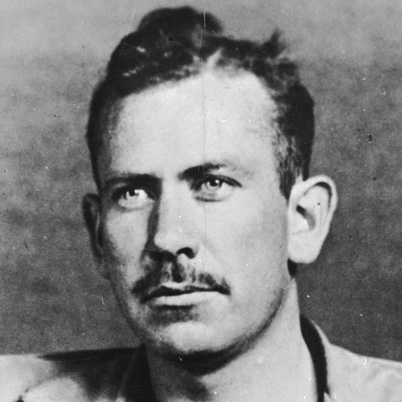
Steinbeck studied at Salinas High school, and then went to Stanford University in Palo Alto. Despite staying there for five years, he left without a degree. In 1925, he left university and sought to establish himself as a writer in New York. However, he was unable to make a career for himself and he was forced to support himself doing odd jobs. In 1928, discouraged, Steinbeck returned to California where he got a job as a caretaker in Tahoe city. Despite working full time, in 1929, he was able to get his first novel, Cup of Gold , published.
However, after a few years, Steinbeck received some financial support from his father, this allowed him to give up his full-time job. Steinbeck was able to devote more time to writing from his father’s cottage in Pacific Grove, Monterey, California. He also married Carol Henning in 1930.
In 1935, the novel ‘ Tortilla Flat ‘ was published to critical acclaim. The novel was set in Monterey after World War One and portrays a bunch of homeless and classless men who reject the social mores of society. This novel was his first major breakthrough and gave him the financial income and confidence to pursue writing other novels.
This period led to some of his most productive writing years. In particular, his short book ‘ Of Mice and Men ‘ (1939)and the epic novel – The Grapes of Wrath (1939) established his reputation as one of the pre-eminent modern American writers.
Of Mice and Men was a short story about two migrant workers, George Milton and the mentally retarded Lennie Small who seek employment during the Great Depression. The Grapes of Wrath is a deeper discussion of the social, economic and cultural implications of the Great Depression. It focuses on a family of poor tenant farmers and their difficulties during the Great Depression; it offers a sympathetic account of migrant workers and is critical of capitalism. The Grapes of Wrath became the best selling book of 1939, and it led to Steinbeck being awarded the Pulitzer Prize for fiction.
Both books captured the despair and personal cost of the Great Depression, and have become a classic literary account of this period. As well as the social implications, Steinbeck also captured a poignant reference to a mystical element of American farming land. The tragedy of the Great Depression heightened the missed opportunities to enable the American dream of cultivating the most fertile soil of the country.
Steinbeck’s subtle political commentary was also controversial. The book, The Grapes of Wrath , was banned by the Kern County board of supervisors from 1939-41. Steinbeck was an active supporter of the FDR’ s Liberal New Deal and had strong contacts with left-wing writers and labour union figures. In 1967, he went to Vietnam and wrote strongly in support of the war, which many felt was compromising his earlier liberal ideas. Steinbeck complained of government harassment because of his political views, arguing J. Edgar Hoover of the FBI encouraged the tax authorities to harass him.
In 1942, he divorced his first wife and remarried, Gwendolyn Conger, they had one child – John Steinbeck IV. During the Second World War, Steinbeck wrote a novel inspired by the spirit of resistance to German occupation – The Moon is Down (1942). He also served as a war correspondent; he saw action in the Mediterranean and North Africa. In 1944, he was wounded after a munitions explosion and returned home.
After the war, he visited the Soviet Union with renowned photographer, Robert Capa. He published his experiences in ‘ A Russian Journal ‘ it was a rare American insight into post-revolutionary Russia.
In 1948, Steinbeck experienced a period of mental depression after a close friend, Ed Ricketts died in a motor accident, and his second wife insisted on divorce shortly after. Ricketts had encouraged much of Steinbeck’s writing during his most productive period in the late 1930s.
Steinbeck remarried for the third time in 1950. In 1952, he wrote his last great masterpiece, East of Eden
“And this I believe: that the free, exploring mind of the individual human is the most valuable thing in the world. And this I would fight for: the freedom of the mind to take any direction it wishes, undirected. And this I must fight against: any idea, religion, or government which limits or destroys the individual. This is what I am and what I am about.”
John Steinbeck, East of Eden
In 1962, he was awarded the Nobel Prize for Literature. The Nobel Committee cited his great works Of Mice and Men, The Grapes of Wrath and a recent novel ‘ The Winter of Our Discontent ‘. Steinbeck was typically modest, questioning whether he really deserved it.
After 1962, he didn’t write any more novels until his death in 1968.
Citation: Pettinger, Tejvan . “ Biography of John Steinbeck ”, Oxford, UK www.biographyonline.net , 22 January 2013. Last updated 8 February 2019.
The short novels of John Steinbeck

- The short novels of John Steinbeck at Amazon
Related pages

- Top 100 writers
- Steinbeck at Nobel Prize

IMAGES
COMMENTS
John Steinbeck, American novelist, best known for The Grapes of Wrath (1939), which summed up the bitterness of the Great Depression decade and aroused widespread sympathy for the plight of migratory farmworkers. He received the Nobel Prize for Literature in 1962.
Who Was John Steinbeck? John Steinbeck was a Nobel and Pulitzer Prize-winning American novelist and the author of Of Mice and Men, The Grapes of Wrath and East of Eden.
John Steinbeck, American author and winner of the Nobel Prize in 1962, was a leading writer of novels about the working class and was a major spokesman for the victims of the Great Depression (a downturn in the American system of producing, distributing, and using goods and services in the 1930s, and during which time millions of people lost ...
The Nobel Prize in Literature 1962 was awarded to John Steinbeck "for his realistic and imaginative writings, combining as they do sympathetic humour and keen social perception"
John Steinbeck (1902 – 1968) was an American writer best known for his novels about the social consequences of the Great Depression in America. His most famous works include Of Mice and Men (1937), The Grapes of Wrath (1939) and East of Eden (1952).
John Ernst Steinbeck (/ ˈstaɪnbɛk / STYNE-bek; February 27, 1902 – December 20, 1968) was an American writer. He won the 1962 Nobel Prize in Literature "for his realistic and imaginative writings, combining as they do sympathetic humor and keen social perception". [2] . He has been called "a giant of American letters." [3][4]